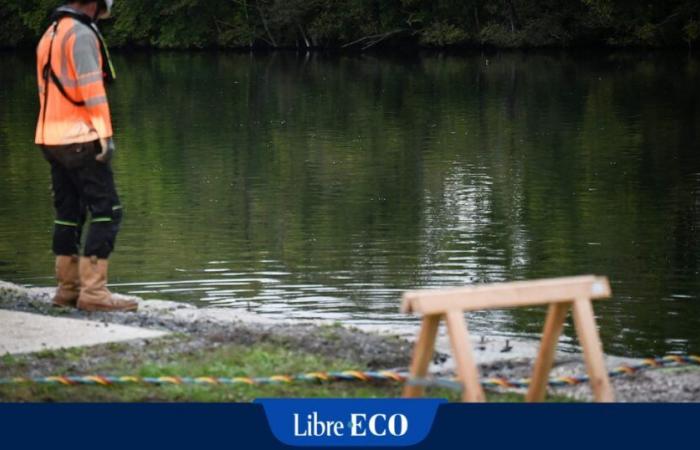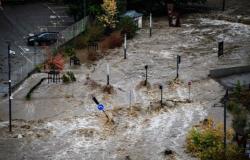
Imagined at the beginning of the 2010s, the “Nouveau Bassin” real estate program was to create 2,300 housing units and 35,000 m² of commercial space on an industrial wasteland in the Charbonnages de France. He “will not happen”says the general director of the local public development company (SPLA) “Caen Presqu’île” in charge of the project, Thibaud Tiercelet.
gullIt is the end of a 170-year-old model, of the technological explosion which enabled the era of major works […]we will now have to adapt.”
Instead, a promenade is being developed while awaiting a so-called hydraulic dynamics study on the entire Orne estuary, relating to the rise in sea level downstream and the flow of the Orne. upstream.
Here is “the survival manual of humanity”: The IPCC releases its highly anticipated report
The “Norman IPCC”
In 2023, when all the authorizations are finally obtained to start the work, Thibaud Tiercelet is alerted by an assembly of experts responsible for determining the impact of climate change on the region (called “Giec normand”, unrelated to the group of climate experts mandated by the UN). The town planner asked to meet Joël Bruneau, then mayor of Caen and president of the urban community of Caen-la-mer, to present the data to him. “For us, the reference is the IPCC: in 2017, the estimate of sea level rise was 20 cm by 2100, in 2020 it was 60 cm, in 2023 we had moved to a meter”remembers Thibaud Tiercelet.
The IPCC anticipates a probable rise of between 40 and 80 cm in sea levels by 2100, while warning that poorly understood factors were not taken into account, such as the melting of ice caps, which could boost the phenomenon. In all cases, the IPCC recommends that cities anticipate beyond the most probable intervals.
The risk of flooding
Currently, the quay is only 70 cm above the canal water. “If the sea rises by one meter, it floods here every week.”decides the director of the SPLA “Caen Presqu’île”. As for the level of the canal, it is today regulated by a lock, “which has only 50 cm of flap at high tide”he notes. In a few decades it will no longer fulfill its role. From then on, the priority becomes “protect urbanized territories without creating new difficulties”.
Emmanuel Renard, vice-president for planning and land for the urban community of Caen-la-mer, judges the temporality for this type of investment to be “a hundred years” and therefore relies on the “high hypotheses, the most probable”. According to the elected official, the water will rise “at least one meter, will it be in 2070, in 2100, in 2120, no one can say”.
The president of the urban community Joël Bruneau therefore decided to stop the project, as well as the extension of the tram and an access footbridge, recalls Emmanuel Renard, estimating that “stopping everything two years later would have been expensive”.
“The water level may continue to rise”: here are the rivers for which the flood alert threshold has been crossed
The end of a model
To replace the “Nouveau Bassin” project, the director of the public development company imagines “a transitional urban planning of 40 years with temporary occupations” such as student accommodation or artisan workshops on these lands where disused warehouses await their destruction.
With the increasingly frequent rise of sea water, through the estuary or groundwater, this fresh water ecosystem will gradually become salinized. The tree species that will soon be planted around the promenade, currently being decontaminated, have been chosen to adapt to this new ecosystem.
“This is the end of a 170-year-old model, of the technological explosion which enabled the era of major works, of control of our environment, we will now have to adapt”concludes Thibaud Tiercelet.





